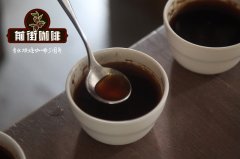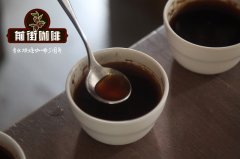Characteristics of Common Coffee processing methods Flavor expression of Coffee treatment

Professional coffee knowledge exchange more coffee bean information please follow the coffee workshop (Wechat official account cafe_style)
The coffee fruits from the outside to the inside are:
Peel, pulp, pectin layer, hard shell, silver peel, coffee seed
And what we end up drinking is the innermost coffee seed.
If the ripe fruit is not treated, it will rot in a very short time, so it needs to be refined before it can be preserved for a long time, convenient for transportation and storage.
Here are the common ways to handle raw coffee beans.
1. Insolation
Brief description of the treatment method: solarization is the traditional way to treat raw coffee and beans. After collection and screening, the fruits of the same size and color are selected and put into the exposure site for full sun drying, drying for about three weeks until the water content is about 12% (during which time you need to turn frequently), and then remove the hard shell on the surface of the coffee bean.
Features: sun-treated raw beans are yellow in color (except honey treatment), have good sweetness and mellow thickness, and are rich in flavor. But there are many defects in appearance and the quality is slightly unstable.
two。 Water washing
Brief description of treatment method: water washing is a treatment method with high utilization rate at present. After the fruit was picked and washed, the immature fruit floating on the water surface was removed, the peel, pulp and impurities were mechanized, and moved to the fermentation tank for fermentation treatment. After fermentation, the pectin was sunburned for a certain period of time until the water content was about 15% before shelling.
Features: although the process is tedious, and requires a lot of water resources, the cost is high, but coffee beans have a neat appearance, less miscellaneous flavor, clean taste and stable quality.
3. Semi-washing method
Brief description of the treatment method: the improved washing treatment method. Compared with the water washing method, the water consumption is greatly reduced, and the pulp fermentation stage is replaced by machine removal. So the time is also greatly reduced.
Features: save a lot of water resources and time costs, taste between washing and sun exposure, mild and insipid flavor. The risk of mildew in the washing fermentation tank is avoided.
4. Honey treatment
A brief description of the treatment method: it is also called peeling and tanning treatment. Mainly divided into black honey, red honey, yellow honey. There is a slight difference in the proportion of pulp removed. The fruit is picked and washed to remove the peel, and the pulp is reserved for sun treatment, which is often turned over to avoid mildew. After drying, the pulp is removed and the shell is removed.
Features: because the flesh containing sugar is retained for drying, it is full of sweetness, thick taste and strong aroma. But it is also a risky way to deal with it, which is time-consuming and laborious.
5. Wet planing method
A brief description of the treatment method: the famous Mantenin unique treatment method. The local humidity is high, there is no long sunshine, the local people tailor-made treatment methods. Peel off the peel after picking, put into a sink to remove floating beans, take out the rest of the coffee beans, after short-term fermentation treatment with shell sun treatment to about 40% water content, when the bean body is semi-hard, the machine is shelled (in order to speed up drying), and finally sun to about 12% water content. 、
Features: the drying time is shortened, the sour taste of beans is greatly reduced, the alcohol thickness is obviously increased, and the aroma of caramel is obvious. Because the bean body is wet and soft for shelling, the beans will crack slightly, that is, the goat beans unique to Mantenin, which is easy to get infected with bacteria and cause mildew if they are not handled properly.
6. Monsoon treatment
A brief description of the treatment method: the unique treatment method of India. In the early days, coffee beans exported from India to Europe arrived by ship for several months. Due to the heavy moisture and high salinity of the sea, the coffee beans will change from turquoise to light yellow when they arrive at the destination. But the taste is very unique, so now through a series of means to simulate the transportation process, that is, the so-called monsoon treatment.
Features: the bean body is golden, slightly inflated, low density, low acidity and mellow flavor, with a special grain flavor. During treatment, due to excessive humidity, it is easy to breed bacteria and cause mildew.
Important Notice :
前街咖啡 FrontStreet Coffee has moved to new addredd:
FrontStreet Coffee Address: 315,Donghua East Road,GuangZhou
Tel:020 38364473
- Prev

Why is black coffee also sweet? is coffee sweet with honey treatment? what is coffee honey treatment?
Professional coffee knowledge exchange more coffee bean information please pay attention to the coffee workshop (Wechat official account cafe_style) why black coffee can be naturally sweet? Common sense of life tells us that fruits are sweet and vegetables are not sweet. Among the sweet fruits, they are divided into sweeter ones and less sweet ones. In the same kind of fruit, it is divided into the special sweetness of a certain producing area and the ordinary sweetness of a certain producing area. Factors that cause plants to be sweet
- Next

The optimal extraction rate for a cup of coffee what are the normative guidelines for brewing coffee?
Professional coffee knowledge exchange more coffee bean information please pay attention to the coffee workshop (Wechat official account cafe_style) gold cup theory we already know that the main component of coffee grounds is cellulose, then coffee powder in the process of turning coffee grounds, about 30% of the substance will be dissolved by water. The dissolved coffee substance accounts for the weight of all coffee powder, which we call it.
Related
- What is the meaning of lactic acid fermentation with coffee bean treatment?
- How to judge the state of foam by sound?
- How does the latte pull out the unicorn pattern? Come to get for a little trick to improve the flower pull!
- Will flower pulling affect the taste of the latte?
- Do you know the history of coffee?
- The difference between honey treatment and sun washing what is raisin honey treatment?
- What kind of milk can a novice use to make coffee foam to keep the foam longer? The correct method and skills of milking tutorial sharing
- Why do washed coffee beans taste sour? Flavor characteristics of washed Coffee
- Introduction to the skill of how to practice the size and height of water injection around the circle of hand-brewed coffee
- How do beginners practice coffee flower drawing from scratch?

